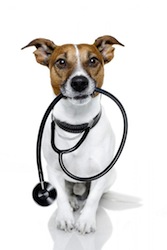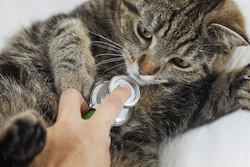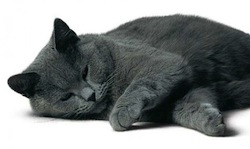
I monitor my heart animal.
- What RRS?
This is the Rhythm Breathing during sleep.
This is probably the most sensitive of the occurrence of pulmonary edema or pleural effusion in dogs and cats indicator
This is a technical monitoring at home very useful to achieve.

It is recommended in two situations :
when the diagnosis of heart failure has been laid (and is now controlled)
when heart condition exists and can progress to heart failure in the future.
- How to do?
You measure the RRS and appearance (number of breaths per minute (r / mn)).
The measurement is performed when the animal sleeps (or comfortably break), in a normal temperature environment (neither hot or cold) and calm.
The measurement is repeated two or three times during 2 to 3 days (to obtain an average), and renewed once or twice a week.
You may notice these measures in your pet's logbook.
If substantial changes RRS occur between measurements, daily control must be performed to confirm the change. If this change is confirmed, you must talk to your veterinarian to evaluate your pet, if necessary, adapt its treatment..

- What is a normal RRS ?
One RRS normal for a dog or cat < to 30 r / mn, often < to 20 (between 13 and 19).
A SIPP regularly > 30 r / min in patients with known heart disease is strongly suggestive of the development of heart failure. Attention, this change can still sometimes be due to a respiratory problem, but then also should show it to your veterinarian.
- And respiratory rate at rest (RRR) ?
The respiratory rate at rest in the dog or cat is more variable than the RHA. It is more likely to be influenced by the activity, recovery after exercise, Room temperature, the anxiety, pain etc.. If it's possible, it is better to prefer the RRS.
- What can you observe other ?
o Cats often have very subtle changes in behavior or breath before fulminant heart failure. You may be difficult to observe these changes as long as the cat is not in respiratory distress
o changes in activity, appetite or weight loss in cats with known heart disease are often warning signs of the risk of an imminent heart failure occurrence.

o Cough is a sign variable in dogs and is often absent in cats. Rarely has a cat with heart failure cough, it is more often observed in primary respiratory disease such as asthma. The dog will cough with the progression of heart failure, but it is often intermittent and inconsistent symptom observation. Also many other diseases can cause coughing, as a tracheal collapse or tracheitis, especially in small breeds.
- Is the RHA reported in a patient under treatment for heart failure ?
o If your pet is already under treatment, RRS can be useful for predict the occurrence of pulmonary edema. Indeed a well-controlled patient has a normal RRS (< 30 r / mn) and persistent increase is a great warning sign while enabling early intervention.
o Sometimes if your pet is on diuretics, and that one wishes reduce their dose, you will be asked to monitor daily RHA. Based on observed changes then we will have an excellent risk assessment to continue or not the decrease, or withdrawal, diuretic.
- What if a SIPP is high ?
A high RRS is not diagnosis chronic heart failure. It just means that some "thing" creates tachypnea (Breathing too fast) requiring clinical assessment. This is why it is important to talk to your vet if you notice an increase in the RRS.
